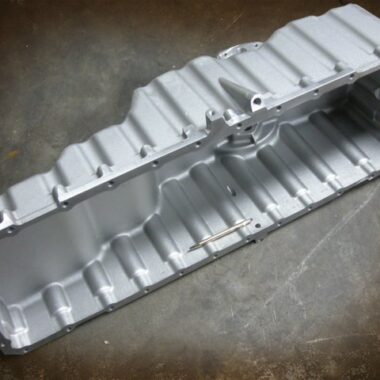The Ultimate Overview to Aluminum Casting: Specialist Insights and Ideal Practices
The Ultimate Overview to Aluminum Casting: Specialist Insights and Ideal Practices
Blog Article
Dive Into the World of Aluminum Spreading: Recognizing the Various Approaches
Aluminum spreading is a fundamental procedure in the manufacturing sector, with various approaches employed to produce accurate and detailed components. From the standard sand casting approach to the advanced die spreading procedure, each method uses distinct advantages depending on the needs of the project.
Sand Casting Technique
Sand spreading, a widely-used technique in aluminum casting processes, involves creating mold and mildews made of compacted sand for putting liquified steel. When the mold and mildew is all set, it is firmly positioned in a flask and molten light weight aluminum is put into the cavity.
After the metal has cooled and solidified, the sand mold and mildew is damaged away to disclose the aluminum casting. Sand casting permits for the manufacturing of complicated shapes and big components that may be pricey or tough to produce using various other approaches. It is likewise a sustainable technique as the sand can be recycled and made use of numerous times, minimizing waste in the casting process.
Irreversible Mold And Mildew Strategy

One substantial benefit of the Irreversible Mold And Mildew Strategy is the enhanced dimensional accuracy it offers. The metal mold allows for tighter resistances and better information in the last light weight aluminum castings compared to sand casting techniques. This accuracy makes it a favored option for applications where tight dimensional control is important, such as in the vehicle and aerospace sectors.

Die Casting Refine

Investment Casting Method
Making use of a precision casting method, Financial investment Casting Technique entails producing complex aluminum components by putting liquified steel into a ceramic mold and mildew. This procedure, also recognized as lost-wax casting, begins with the production of a wax pattern of the preferred component (aluminum casting).
Financial investment casting is frequently made use of for manufacturing elements in sectors where limited resistances and intricate styles are called for, such as aerospace, automotive, and medical equipment. The convenience and precision of the Investment Casting Technique make it a beneficial technique in the world of link light weight aluminum spreading.
Lost Foam Casting Method
Having checked out the detailed accuracy of Investment Casting Strategy, the emphasis currently changes to the innovative method of Lost Foam Casting in light weight aluminum part production. Lost Foam Spreading, additionally referred to as evaporative pattern casting, is a contemporary strategy where a foam pattern of the wanted component is developed and after that covered with a refractory product. The coated foam pattern is then buried in sand, and molten aluminum is poured into the mold. As the metal loads the mold and mildew, the foam vaporizes as a result of the warmth, leaving a tidy tooth cavity in the form of the wanted component.
Additionally, Lost Foam Spreading is an economical process as it reduces the requirement for cores and allows for the manufacturing of light-weight elements. Despite its benefits, Lost Foam Casting calls for careful control of the spreading procedure to avoid problems and ensure top quality elements.
Verdict
Finally, aluminum casting supplies a variety of techniques such as sand spreading, permanent mold method, pass away spreading, investment casting, and shed foam casting. Each technique view has its very own advantages and applications, making aluminum casting a flexible and extensively used process in numerous markets. Understanding the differences between these approaches is essential in choosing one of the most suitable spreading technique for particular production demands.
Sand spreading, a widely-used approach in light weight aluminum casting processes, involves producing molds made of compacted sand for pouring molten steel. aluminum casting.The Irreversible Mold And Mildew Strategy, like sand spreading, is another prevalent technique used in light weight aluminum spreading procedures, supplying distinctive benefits in terms of mold reusability and dimensional accuracy. The metal mold and mildew allows for tighter resistances and better information in the last light weight aluminum spreadings compared to sand casting techniques. The two main kinds of die spreading are chilly chamber die casting and hot chamber pass away spreading, each appropriate for various types of aluminum alloys.In conclusion, light weight aluminum spreading supplies a variety of techniques such as sand casting, long-term mold technique, pass away spreading, financial investment spreading, and shed foam casting
Report this page